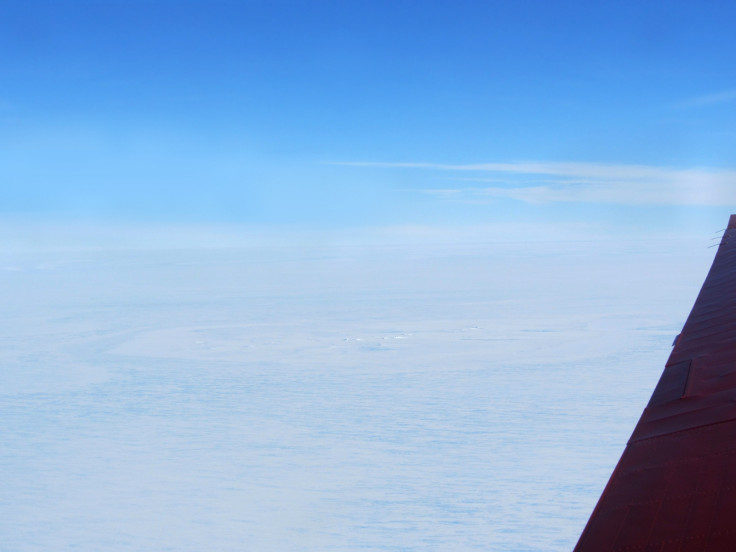Two km wide crater in Antarctica linked to 2004 meteorite impact

A chance sighting of fractured ice looking like icebergs in what is a flat ice shelf during an aerial survey of Antarctica has led scientists to conclude that it could be the impact site of a massive meteorite.
The "crater" which is about 2 km across forms a circular ring in the King Baudouin Ice Shelf.
It has been linked to a 2004 meteor blast detected above this part when a trail of dust was seen 30 km above Antarctica.
Alternatively, the scientists are making connections to a big bang recorded in 2007 with results from a team using global infrasound data to triangulate the location pointing to the same place where the ice crater was spotted.
But satellite images dating back suggest the broken-up ice could be at least 25 years old.
Graeme Eagles, a scientist at Germany's Alfred Wegener Institute, does not still rule out an impact theory.
On a later trip to the crater site, the team led by Eagles mapped the ice surface in great detail with a laser-scanning instrument.
They also surveyed the area with a radar instrument that penetrates the upper surface of the ice and snow. A number of smaller circular and sub-circular structures were spotted nearby on this trip.
It is expected the team will publish their findings soon.
They are hoping to hunt for meteorites around the site. Finding one would remove doubts.
Unlike elsewhere on Earth, the Antarctica's cold, dry conditions preserve meteorites. More than 20,000 space rocks have been discovered on the continent.
However, not everyone is buying into the idea of a crater impact.
An object that forms a crater is usually about 10 to 20 times smaller than the crater itself, said Peter Brown, director of the Center for Planetary Science and Exploration at the University of Western Ontario in Canada.
A 2 km crater would result from an object that measures roughly 100 metres across, Brown told LiveScience and the accompanying explosion would be large.
An interesting question then is what led to the ice ring on the Antarctica shelf.
Near-earth objects bombard the earth daily with around 100 tonnes of rock and dust vaporising high up in the atmosphere. While the smaller ones burn, those above 100 metres reach earth. This can happen as frequently as every 30-40 years.
The last time was in February 2013 when an 18-metre meteor exploded in the skies above the city of Chelyabinsk, Russia, with the force of 30 atomic bombs, blowing out windows, destroying buildings and injuring 1,000 people with a rain of debris.
© Copyright IBTimes 2025. All rights reserved.




















